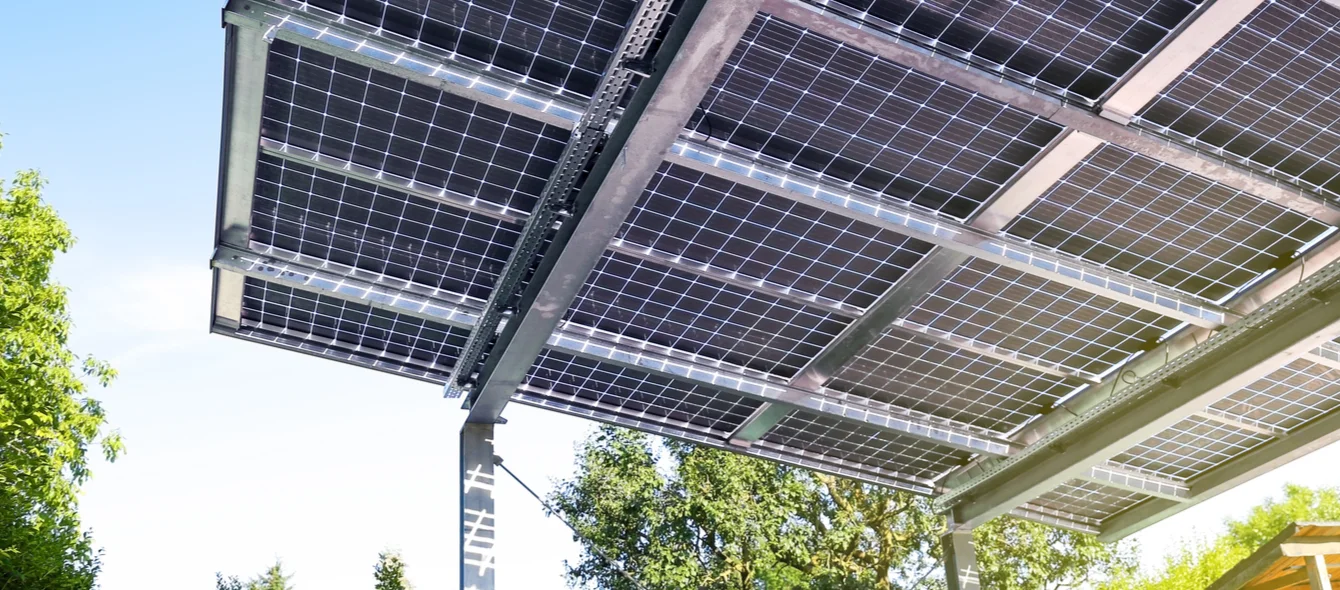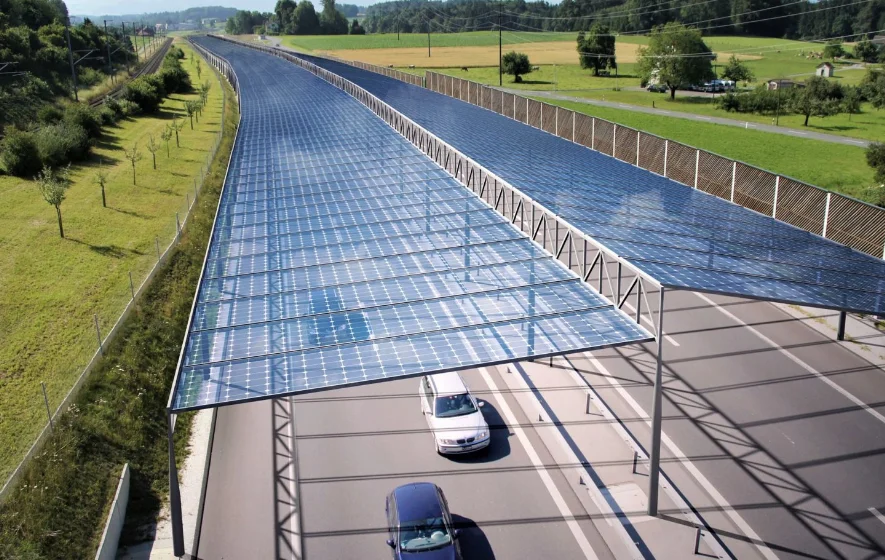Solar power production costs have hit an all-time low, as stated by the International Energy Agency (IEA) in its latest World Energy Report. What’s more, solar modules can be used in myriad ways, making them attractive for many applications. They can already be found on rooftops, fields and lakes. And engineers are constantly working on new approaches. A new series by en:former will present innovative projects in this area.
Rooftop solar panels have been around for years. And roads with PV modules serving as a roof are nothing new, either. A team from the Austrian Institute of Technology (AIT) is currently looking into this unusual application. AIT scientists have a vision of enabling the surface area of motorways and dual carriageways to be used to produce solar power. Germany alone would have substantial potential, thanks to the country’s 12,993 kilometres (km) of motorways and 38,3030 km of dual carriageways. This equals the surface area of Bremen, which could then be covered by a PV roof.
Solar roof could solve space problem
By taking this approach, the researchers are addressing a major issue in solar power production: PV systems require both sunlight and large amounts of space. Ground-mounted arrays quickly reach their spatial limitations where they compete with other usages such as agriculture and recreation. Huge solar roofs over motorways could solve the space problem while generating electricity in a sustainable manner.
Experts of the Fraunhofer Institute for Solar Energy Systems ISE and of Forster Industrietechnik GmbH, an Austrian process engineering equipment manufacturer, are also thinking along these lines. Working in concert, they seek to establish a concept for the technical implementation of such systems. This is to be followed by a pilot project demonstrating the effect of solar roofs on road surfaces. A roof could yield additional advantages. For example, the researchers hope that this would protect the roads from the effects of weather phenomena such as extreme heat and massive precipitation, while people living close to a motorway or dual carriageway would benefit from increased noise abatement.
Translucent, stable and safe
Therefore, the scientists want to develop a prototype that is translucent, stable and safe to avoid darkening roads, damaging paving and endangering drivers. Transparent PV modules may be slightly less efficient, but the Institute finds that this is outweighed by the advantages. As use would be made of surfaces that have already been sealed, construction would be straightforward and grid connections would be short. However, experts feel that costs will be high – especially in the beginning.
The project partners plan to present a concept by the spring of 2021. They envisage testing the model over a stretch of motorway in a demonstration project thereafter. Measurement data will then show whether the idea is practicable.

